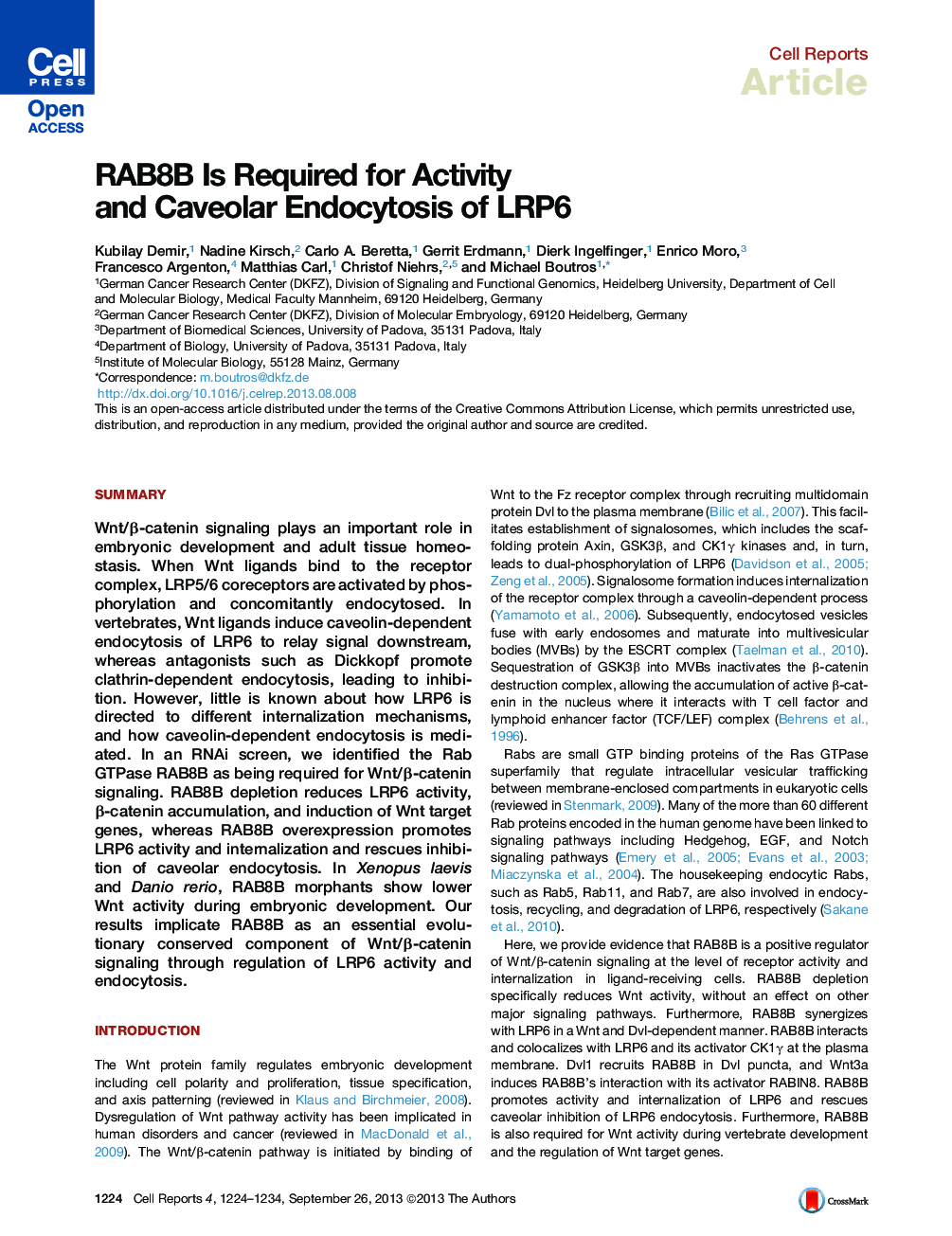| Article ID | Journal | Published Year | Pages | File Type |
|---|---|---|---|---|
| 2042020 | Cell Reports | 2013 | 11 Pages |
•An RNAi screen identifies RAB8B as a positive regulator of Wnt/β-catenin•RAB8B is required for LRP6 (Wnt coreceptor) endocytosis and activity•Wnt3a and Dvl1 regulate activity and subcellular localization of RAB8B•In Xenopus and zebrafish embryos, RAB8B morphants show lower Wnt activity
SummaryWnt/β-catenin signaling plays an important role in embryonic development and adult tissue homeostasis. When Wnt ligands bind to the receptor complex, LRP5/6 coreceptors are activated by phosphorylation and concomitantly endocytosed. In vertebrates, Wnt ligands induce caveolin-dependent endocytosis of LRP6 to relay signal downstream, whereas antagonists such as Dickkopf promote clathrin-dependent endocytosis, leading to inhibition. However, little is known about how LRP6 is directed to different internalization mechanisms, and how caveolin-dependent endocytosis is mediated. In an RNAi screen, we identified the Rab GTPase RAB8B as being required for Wnt/β-catenin signaling. RAB8B depletion reduces LRP6 activity, β-catenin accumulation, and induction of Wnt target genes, whereas RAB8B overexpression promotes LRP6 activity and internalization and rescues inhibition of caveolar endocytosis. In Xenopus laevis and Danio rerio, RAB8B morphants show lower Wnt activity during embryonic development. Our results implicate RAB8B as an essential evolutionary conserved component of Wnt/β-catenin signaling through regulation of LRP6 activity and endocytosis.
Graphical AbstractFigure optionsDownload full-size imageDownload as PowerPoint slide
